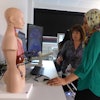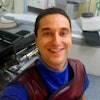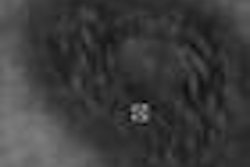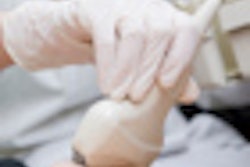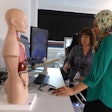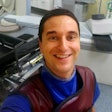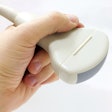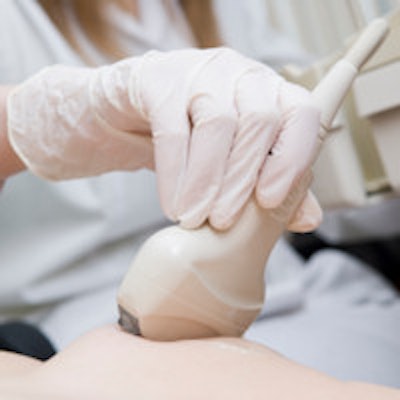
Although MRI and CT attract the most attention, a new survey from the European Society of Radiology (ESR) found that ultrasound still plays a major role in radiology departments. In addition, a centralized ultrasound laboratory seems to be what the future holds.
The ESR Working Group on Ultrasound was founded in 2009 and was tasked with gathering information about the organization and the practice of ultrasound in Europe. The working group sent out a survey three times over a three-month period, between June and August 2011. It was aimed at evaluating the practice of ultrasound within both radiology and other hospital departments (Insights into Imaging, 29 May 2013).
The 38-question survey was available online and sent to 1,038 heads of radiology departments in Europe. The questions were grouped into four categories:
- The hospital: Location, dimensions, and presence or absence of teaching duties
- The ultrasound workload: Number of ultrasound examinations per year, amount of ultrasound equipment available, state of available technology, types of most frequent examinations, organization of the ultrasound laboratory, presence of sonographers, and methods of reporting and archiving ultrasound examinations
- Teaching ultrasound to radiology residents: Organization and duration of training programs, number of examinations to be performed before completion of the training period, and presence of training programs dedicated to sonographers or other nonradiology residents
- Ultrasound examinations performed outside radiology in each hospital; clinical specialists most often involved in directly performing ultrasound; availability of special techniques, such as contrast-enhanced ultrasound; and methods of reporting and archiving ultrasound examinations
The response rate was low -- only 123 answers to the 913 received messages (the rest of the emails were undeliverable).
"It is hoped that this low response rate relates to the many commitments on their side [the heads of radiology departments] and not to low interest in the role of ultrasound within radiology," the working group wrote.
Answers were gathered from different parts of Europe, but close to two-thirds (63.4%) came from five countries: Germany, Austria, France, Spain, and Italy. Most responses came from hospitals with 400 to 1,000 beds (42.3%) and more than 1,000 beds (37.4%). In addition, most (91.1%) were teaching hospitals.
Most radiology departments (77%) have fewer than 10 working ultrasound units, 22% have between 10 and 20 ultrasound machines, and only 0.8% have more than 20 machines, the ESR found. Small, portable units are available in 64.5% of departments, 3D/4D capabilities are present in 52%, elastography is present in 48.2%, and 67.3% have the capacity to perform contrast-enhanced ultrasound examinations.
Up to 57.6% of radiology departments perform more than 10,000 examinations per year, between 3,000 and 10,000 examinations per year are performed in 33.1% of cases, and only 9.3% of departments perform fewer than 3,000 examinations, according to the group.
"It must be noted that there may be a bias in these figures, since it is conceivable that responders were more interested in ultrasound than those who did not answer the questionnaire," the working group noted.
The most frequent ultrasound exams are abdominal (51.51%), followed by breast (14.46%), musculoskeletal (11.59%), pelvic (10.88%), and vascular (10.42%). Only 4.39% of exams are contrast-enhanced.
Organization
Only 13 hospitals have organized a centralized ultrasound lab where all physicians from different specialties come to examine their patients. Radiologists should take the lead in proposing a centralized lab, according to the ESR.
"This would allow the gathering of all the different competencies in ultrasound under the same roof, to share human and technological resources, and to reduce the amount of equipment needed within the hospital," the ESR said.
Also, a centralized ultrasound laboratory can allow each ultrasound scanner to operate for longer hours and with a higher number of examinations, the working group added. Not to mention, requests to upgrade and/or renovate equipment would possibly be easier if they came from a large laboratory and were shared by different hospital departments.
"Another advantage would be having people with different backgrounds work in the same environment, thus promoting exchange and integration of their knowledge and possibly resulting in better patient care," the working group wrote. "It would be easier, in this respect, to prepare institutional guidelines and protocols that place in the correct perspective towards all other imaging modalities and, most importantly, towards patients' needs."
Teaching and training
Some centers organize a theoretical course on basic principles of ultrasound before starting practical activity; then, clinical practice is usually performed according to organ/systems training schemes.
The length of the training period within the ultrasound laboratory in the various teaching hospitals is most often four to six months (38 responses), and the minimum number of ultrasound examinations required before the end of the residency period is more than 2,000 exams (22 hospitals). However, when it comes to exams, the next highest response was fewer than 500 exams (20 teaching hospitals).
There was a direct correlation between the number of ultrasound exams performed in the department and the depth of ultrasound involvement during training: Training programs in the two hospitals where the lowest number of ultrasound examinations per year was performed indicate a period of three months and 250 and 500 examinations. However, a hospital with a workload of 45,000 ultrasound studies per year (but where the examinations are performed by sonographers) suggested only two to three months of training and 100 exams before the end of the residency period.
"In the opinion of the ESR Working Group on Ultrasound, radiologists need to develop consensus on how many examinations under tutorship residents have to perform and on how much time they have to spend in ultrasound before the end of the training period," the ESR wrote. "Approximately 2,000 seems to be a figure on which consensus can be reached. This figure also complies with what is suggested by the EFSUMB [European Federation of Societies for Ultrasound in Medicine and Biology]."
Technique-oriented teaching is necessary to learn how to perform the studies and identify anatomy and pathology. Time and exams are needed to learn how to use ultrasound properly within the framework of organ-oriented training, the ESR continued. About six months dedicated solely to learning ultrasound scanning technique can possibly be considered sufficient, as suggested by 76.2% of responders.
"The capabilities of residents to perform ultrasound examinations have to be assessed during the training period, especially during and at the end of the technique-oriented part," the group wrote. "It is known that the learning curve can vary widely among trainees, and longer times and higher numbers of examinations may be needed in some cases. Additional time should be spent, and exams taken, during organ-oriented training."
Organ-oriented teaching needs to include the proper role of ultrasound in each subspecialty, and technical advances such as contrast-enhanced ultrasound, 3D/4D, and elastography also need to be taken into account.
"Ninety-one percent of answers came from teaching hospitals reporting that training is regarded as an art and is needed in order to learn the basics of scanning techniques, after which working in an organ-oriented manner is the best way to learn how to integrate diagnostic ultrasound within the clinical context and with all other imaging techniques," the ESR concluded.


